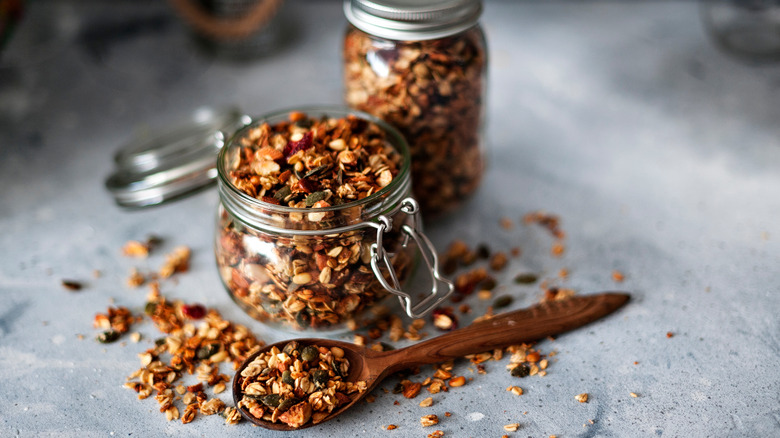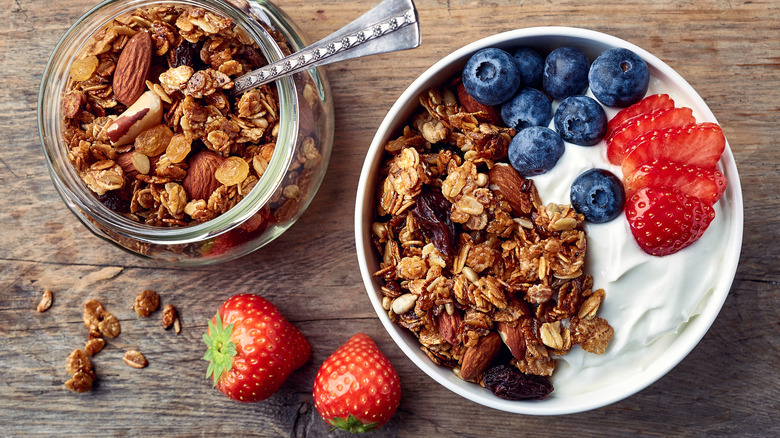Why You Should Be Making Your Own Granola
For something that's regularly touted as a staple for health nuts, granola is often nutritionally more similar to a candy bar than to wholesome breakfast options. This is because many store-bought versions are filled with sugar, fat, and additives to enhance the flavor.
A review of popular brands such as Nature Valley, Special K, and Kind by Nutritionix shows multiple sources of sugar listed in the ingredients. White and brown sugar, cane syrup, rice syrup, honey, molasses ... the list of alternatives goes on. Even those marketed as healthy choices, such as Special K Low Fat Granola, Touch of Honey, actually list sugar and corn syrup above honey, totaling 10 grams of sugar per ½ cup. That's not to mention the fact that many people have an entire bowl, considerably raising those numbers.
Before you spend hours poring through lists of the best granolas to purchase, comparing ingredients and nutritional data, how about you put aside just a few minutes of time to making your own? It could be well worth your time. Bon Appétit had a small panel of judges taste test homemade versus store-bought granola. The resounding conclusion: nothing competes with the taste of freshly toasted granola.
What ingredients should you use for homemade granola?
Nuts, seeds, grains, sweeteners, oils, and dried fruits add up quickly, both in terms of your wallet and calories. But, before you argue about cost, know that The Daily Meal recommends purchasing your granola ingredients in bulk so you always have everything on hand. Homemade granola also allows you to control ingredients for taste, texture, and any dietary needs or food allergies in your household.
Ultimately, it's most helpful to choose your ingredients based on what you want from your granola. Do you want a high-energy snack to sprinkle on top of some yogurt? Pick a recipe with chocolate or coconut! Are you looking for a high-protein, high-fiber granola to fuel your morning? Draw upon recipes with plenty of seeds, nuts, and whole grains, which Healthline points out help contribute to fullness.
To keep sugars low, use one source sparingly. You can also look for recipes that use natural sugars from sources like bananas and applesauce, for instance. If minimum sugar and fat is your goal, Kitchn recommends trying a muesli recipe that isn't baked and doesn't include oils or added sugars. Whatever you end up including in your recipe, keep it in mind when you fill your bowl. If you make healthy decisions when preparing your granola, chances are you'll make a healthier choice when you dive into it!

